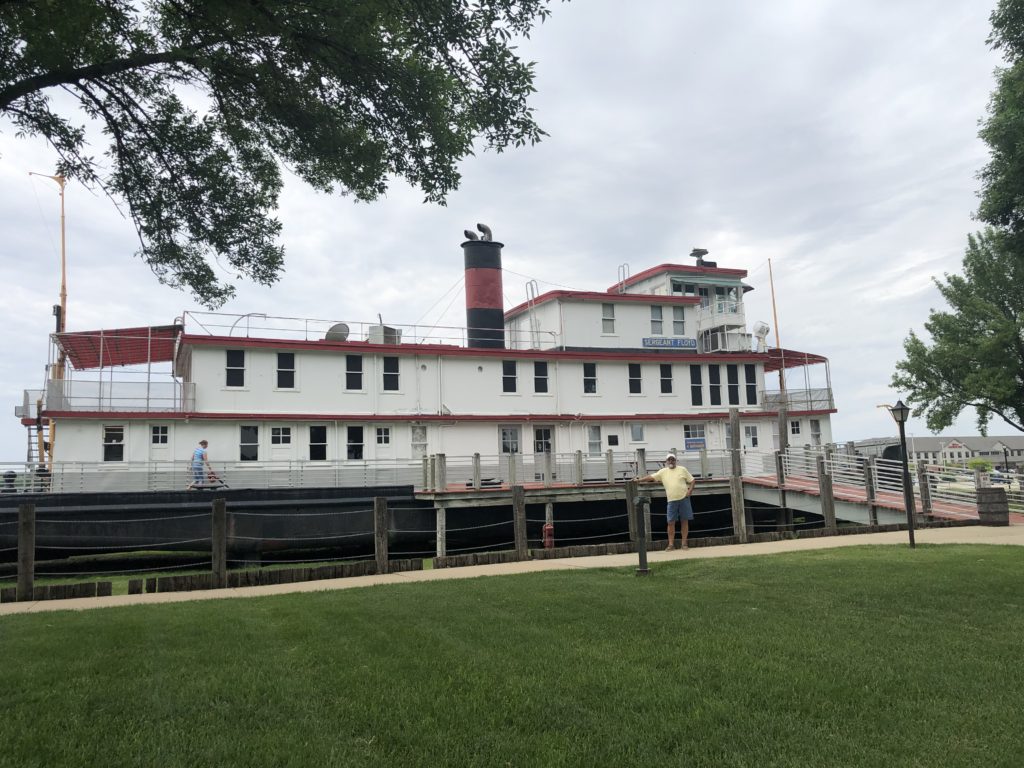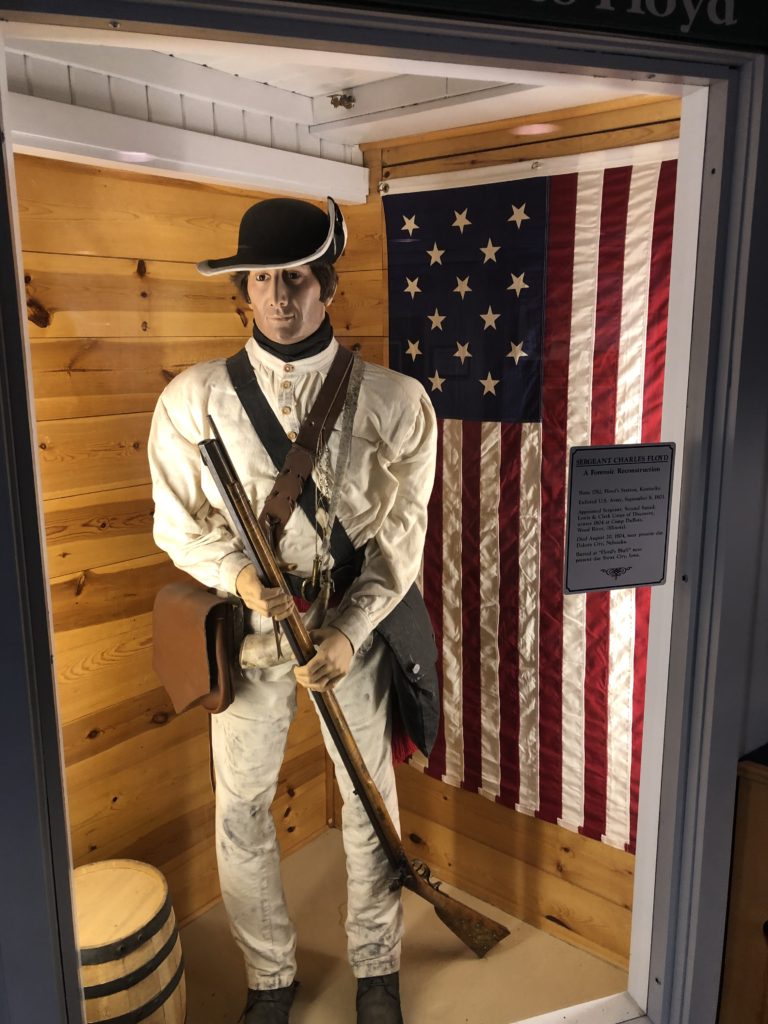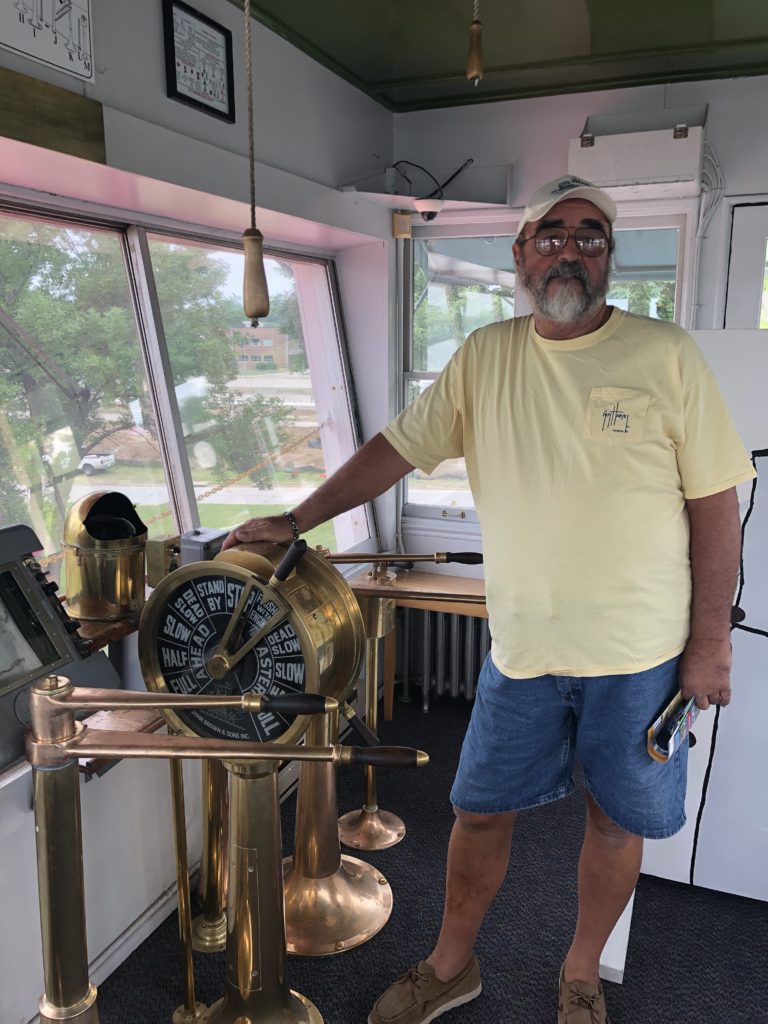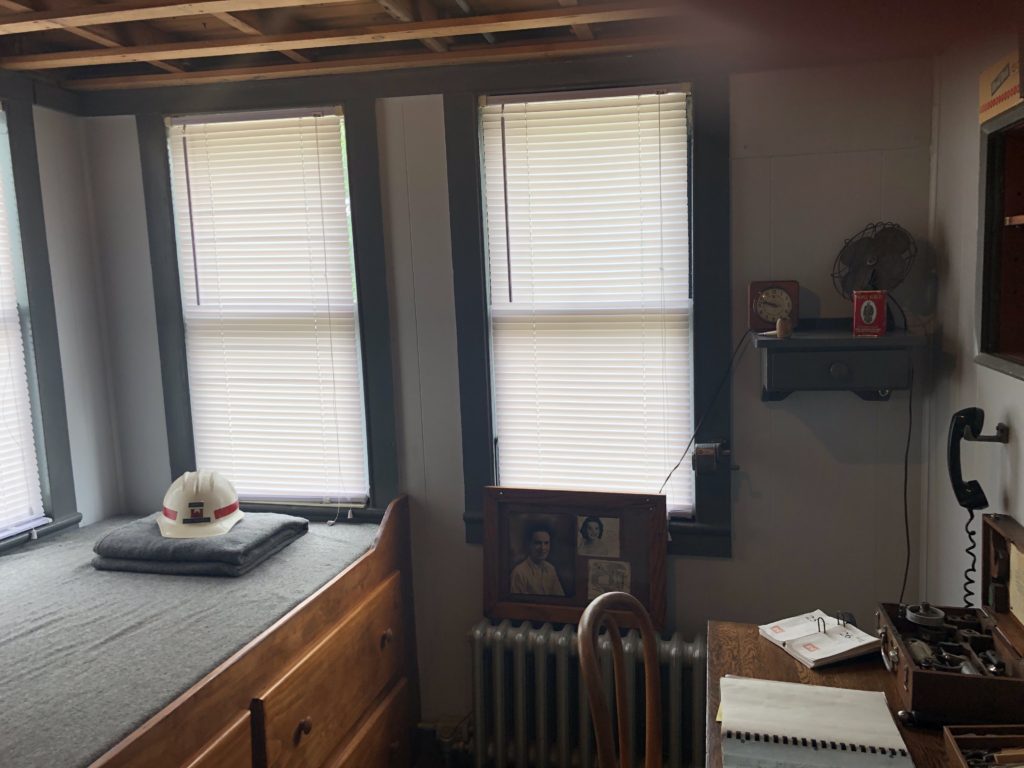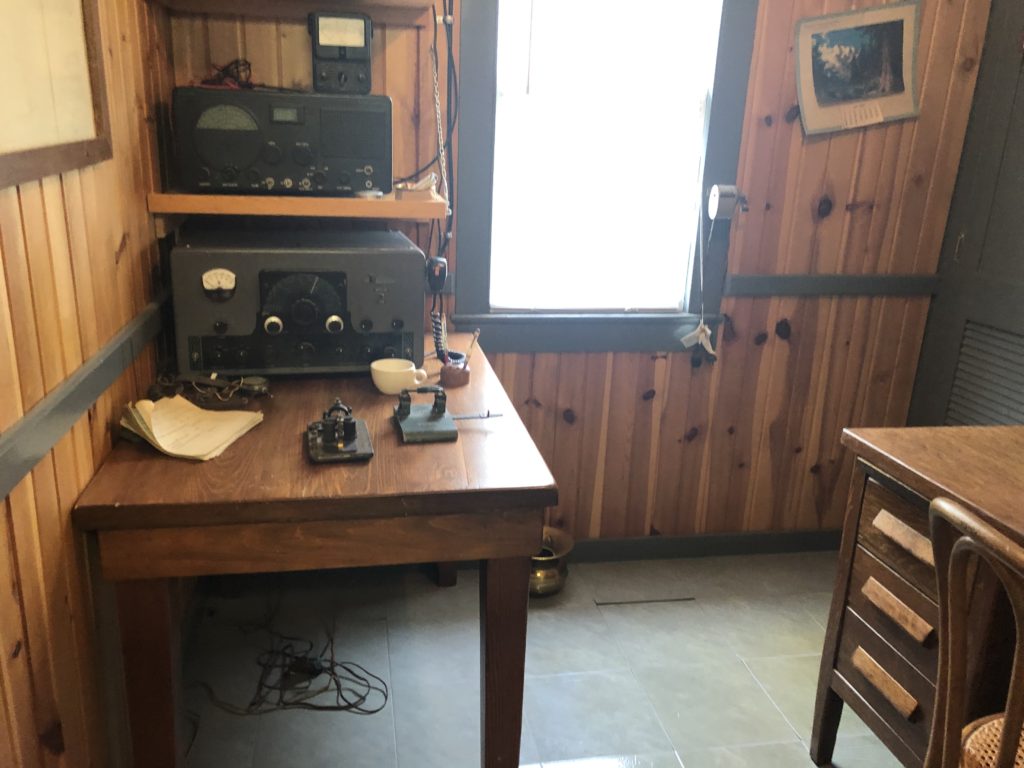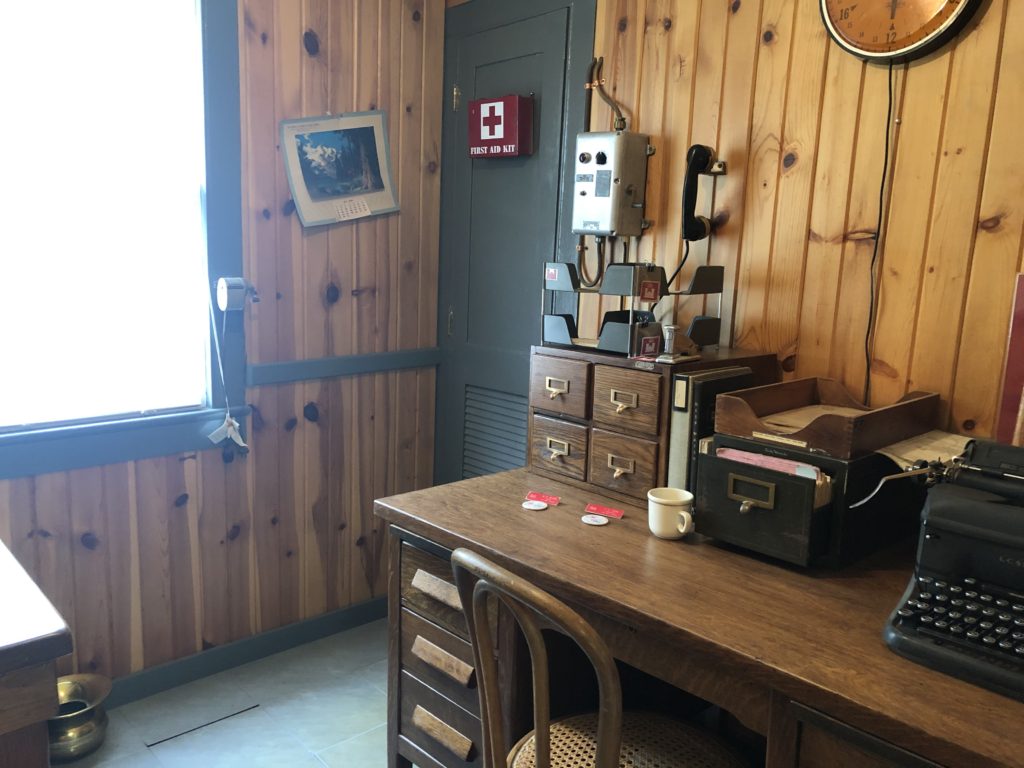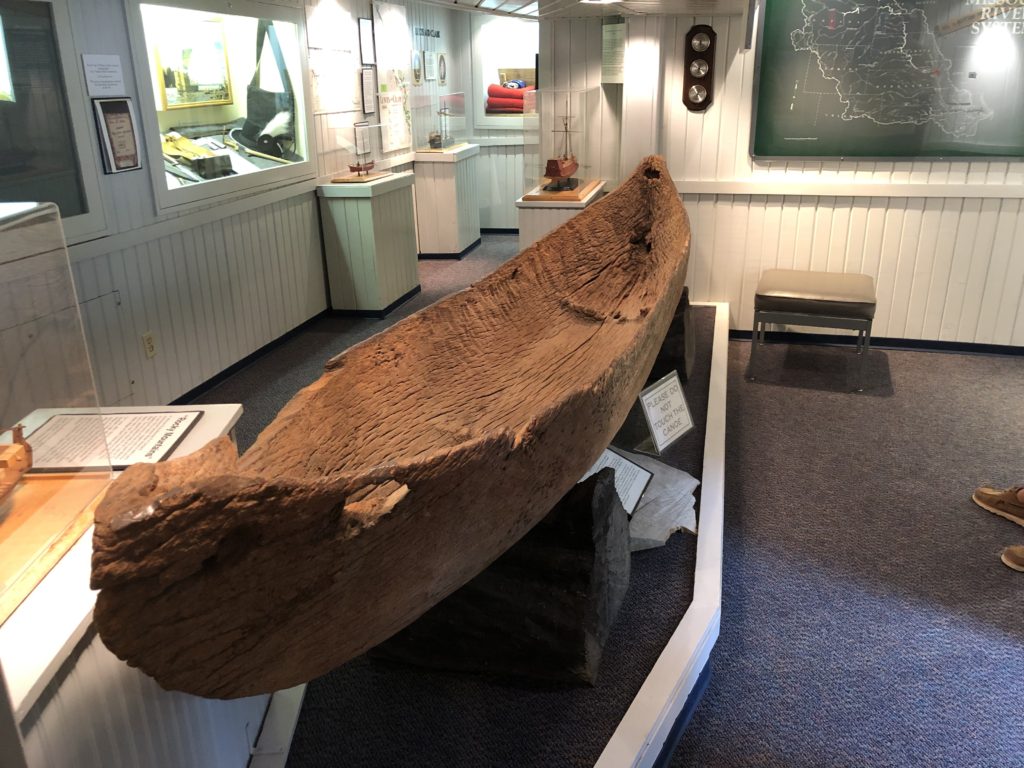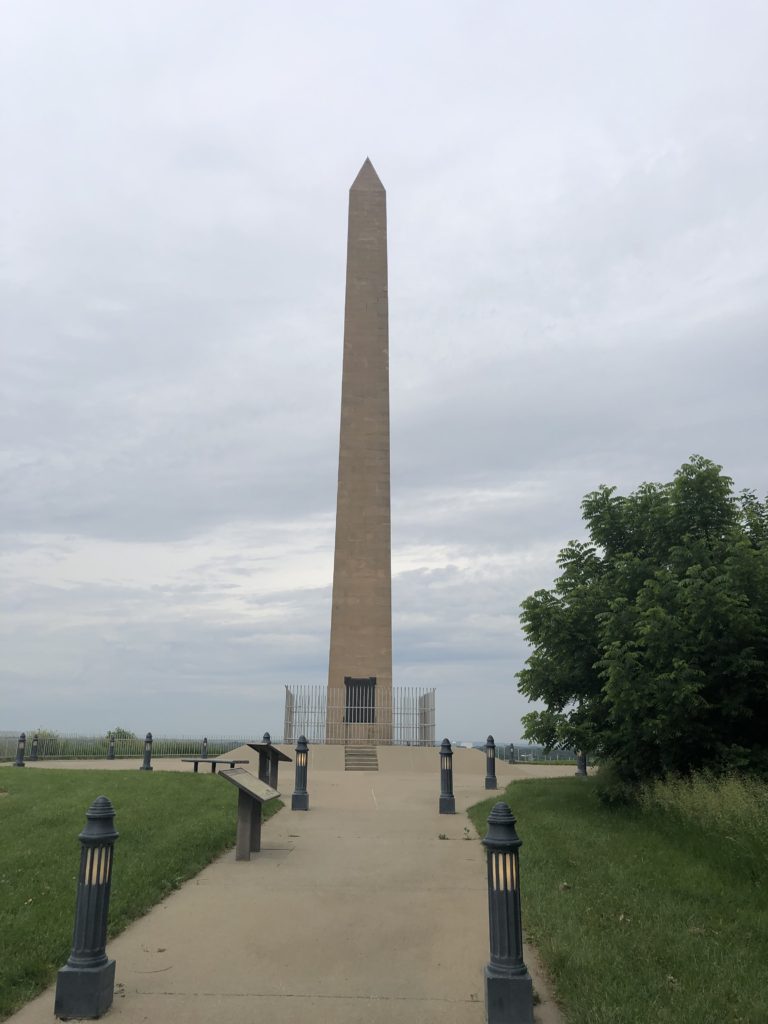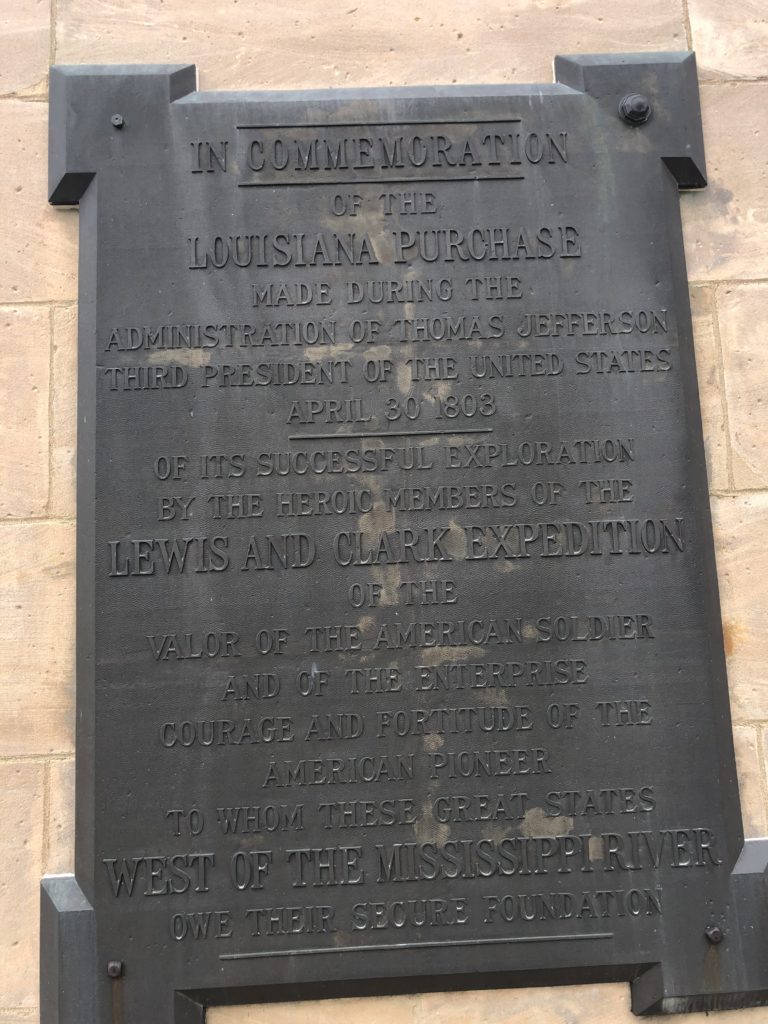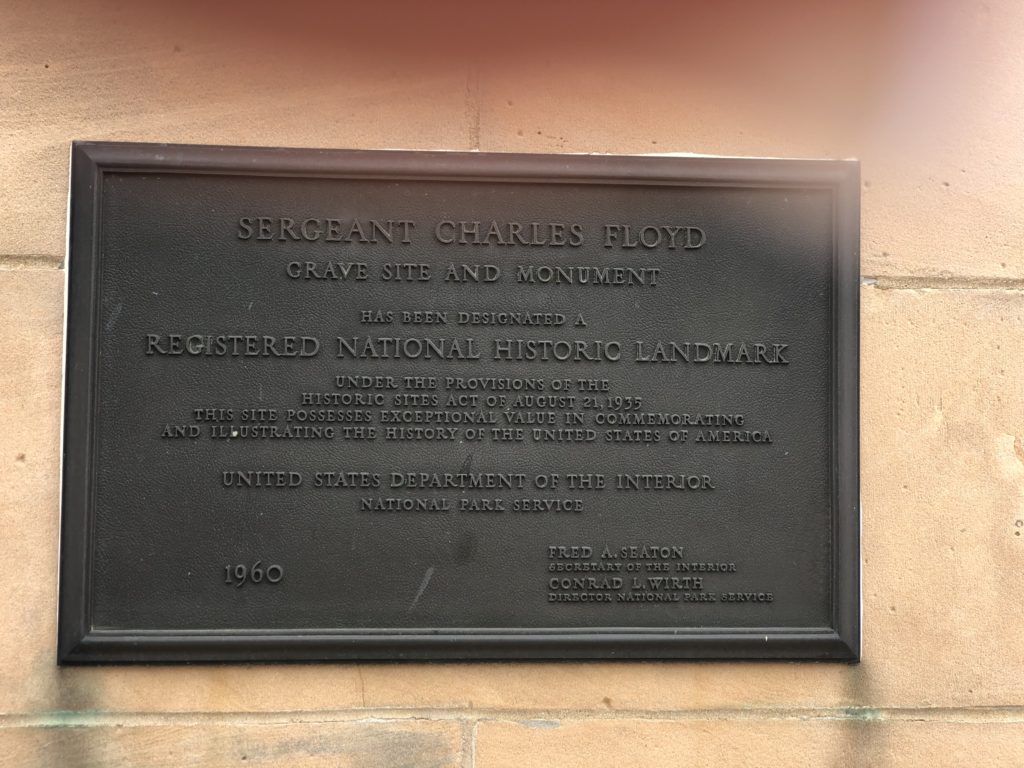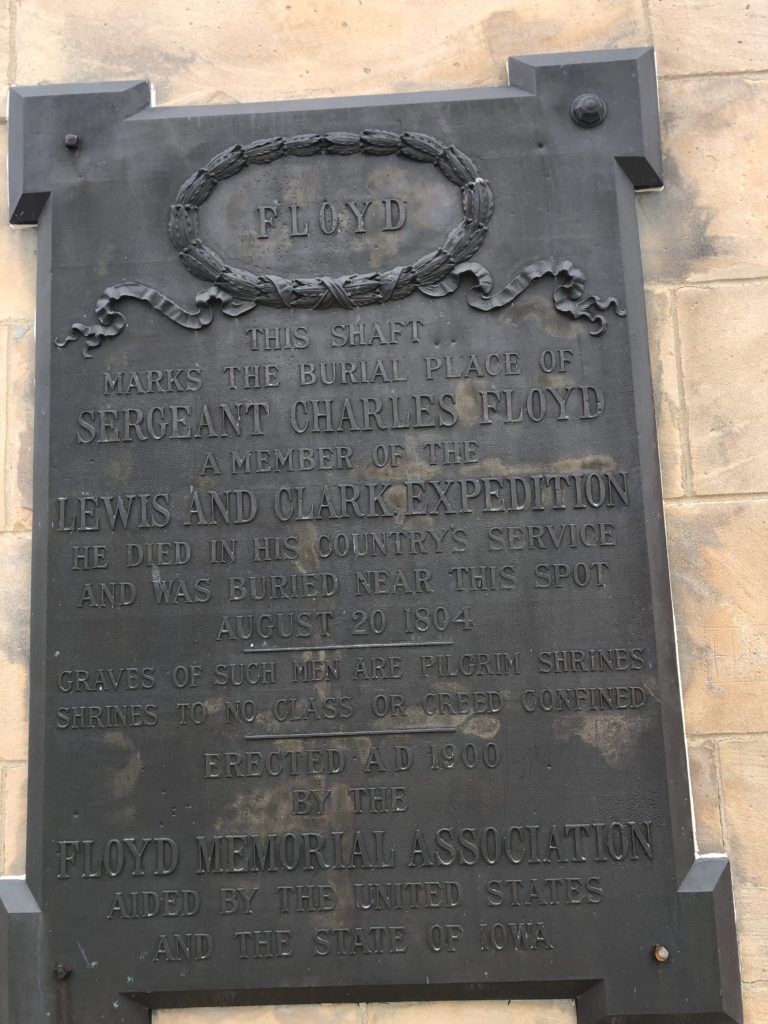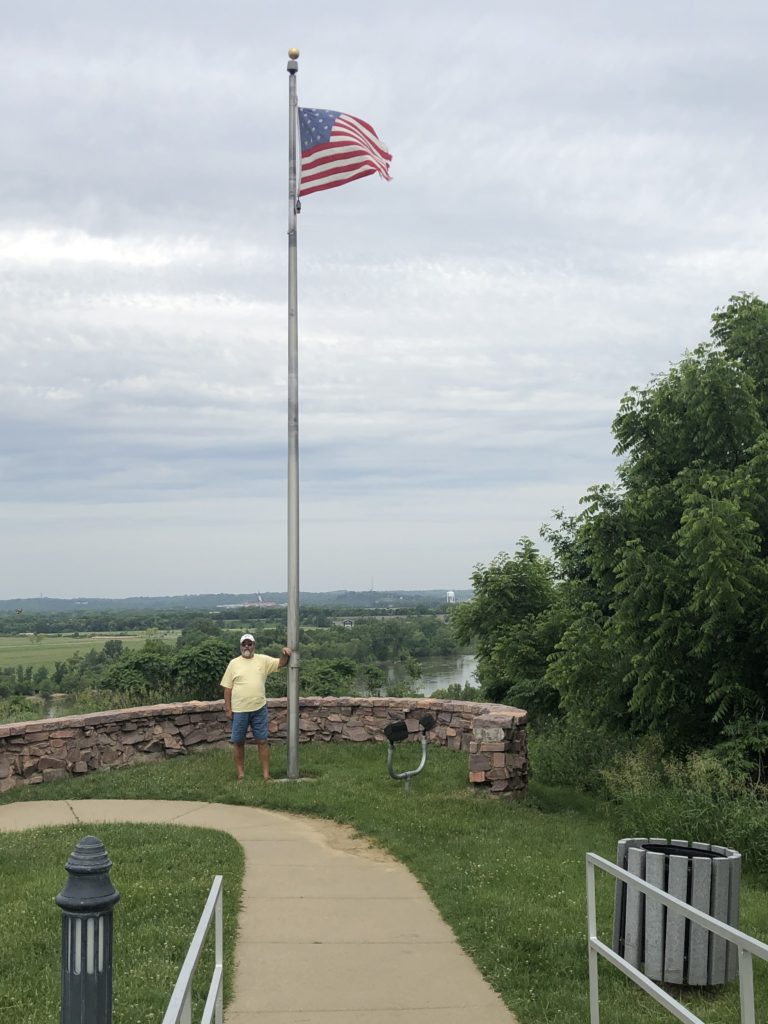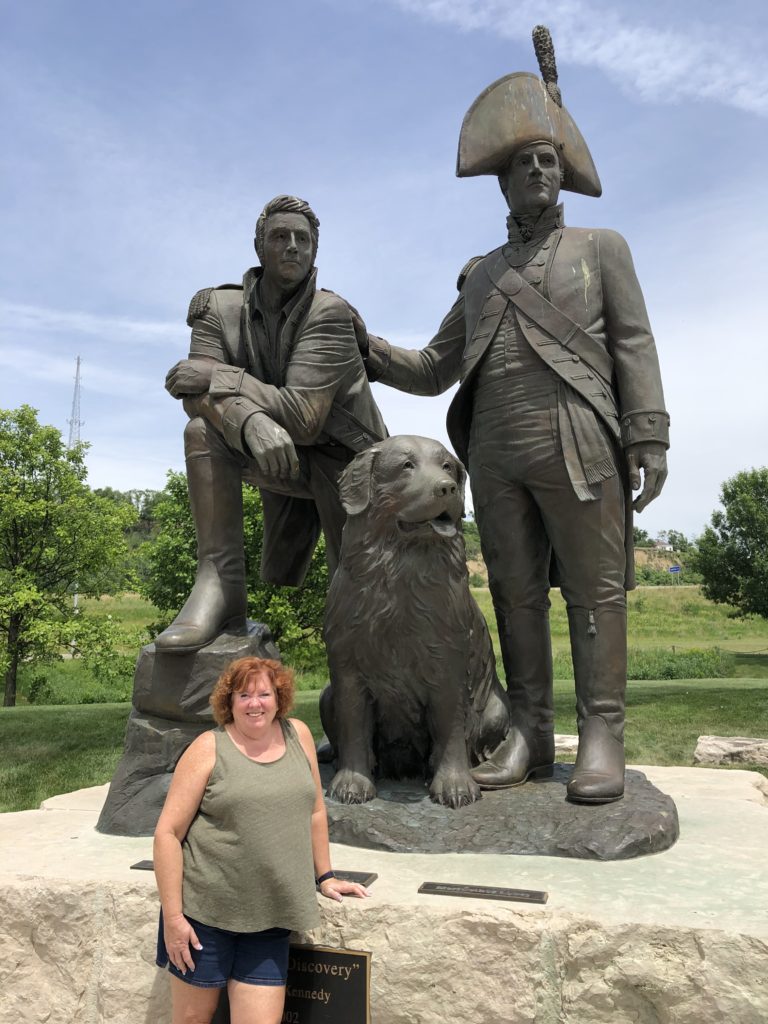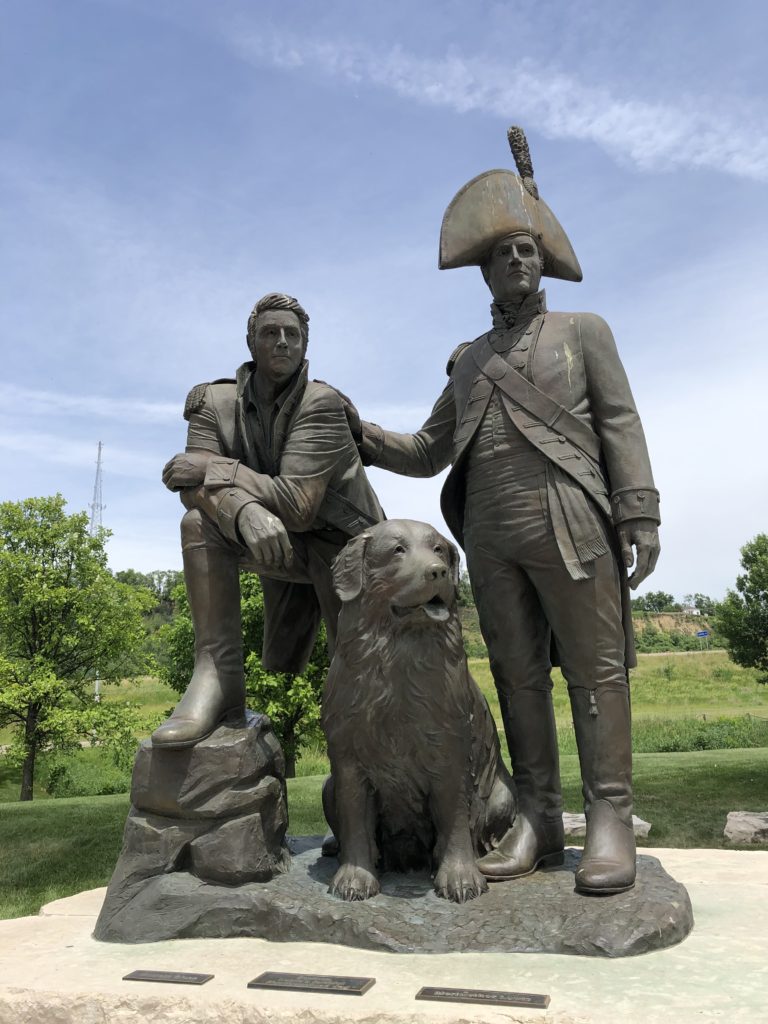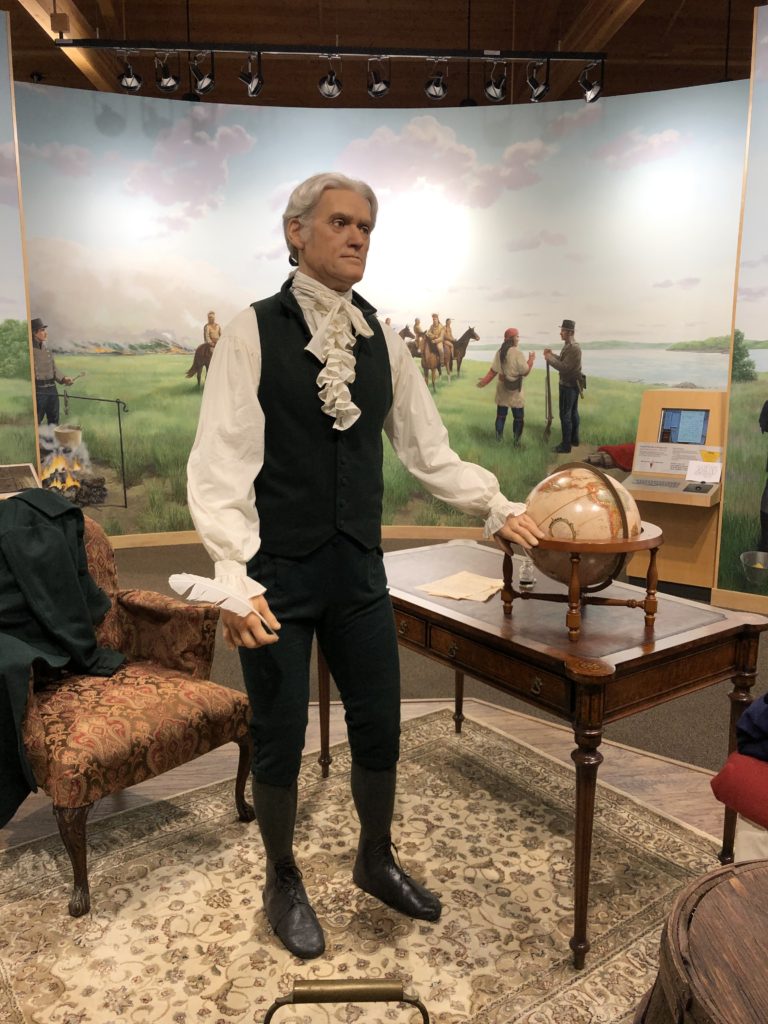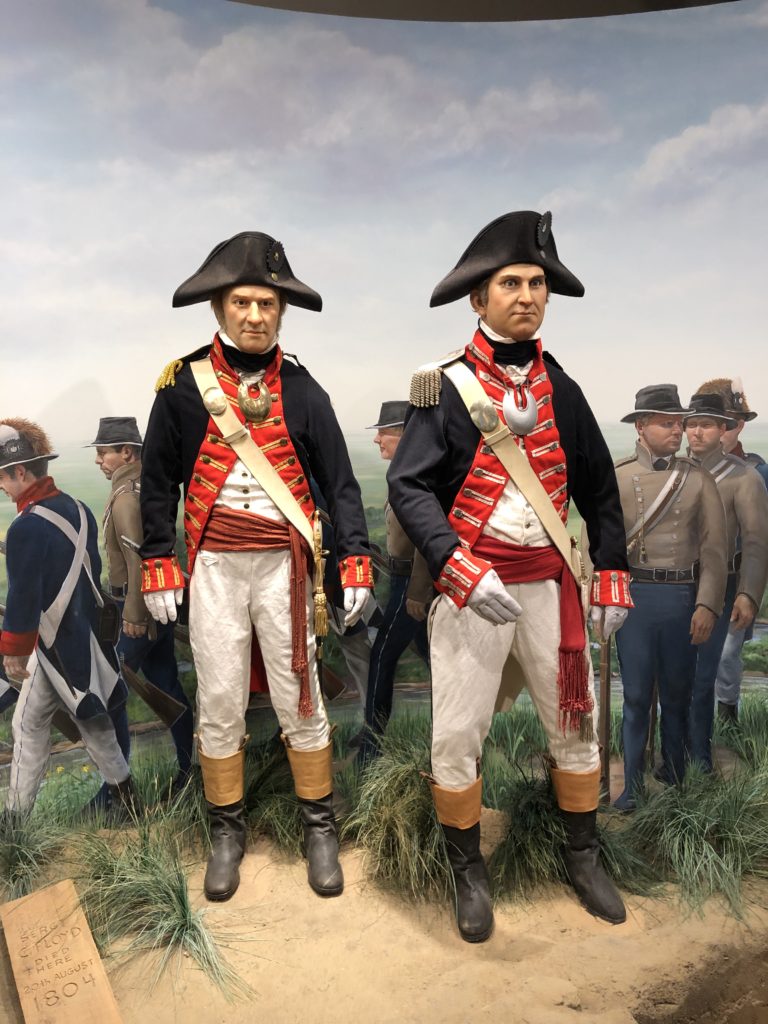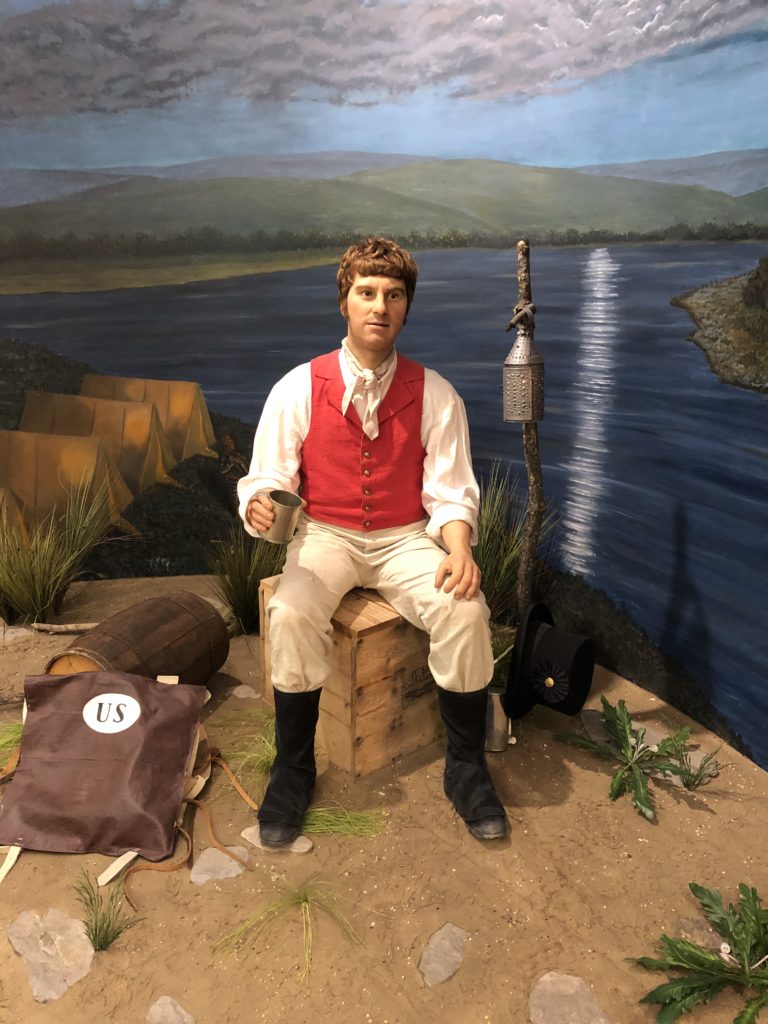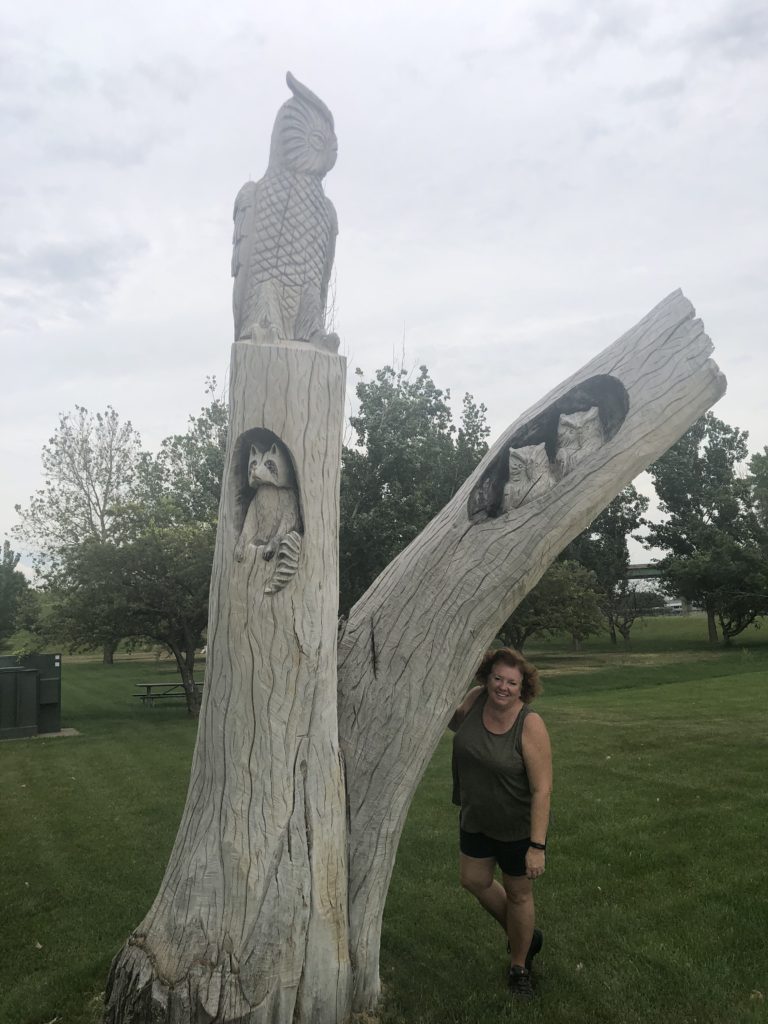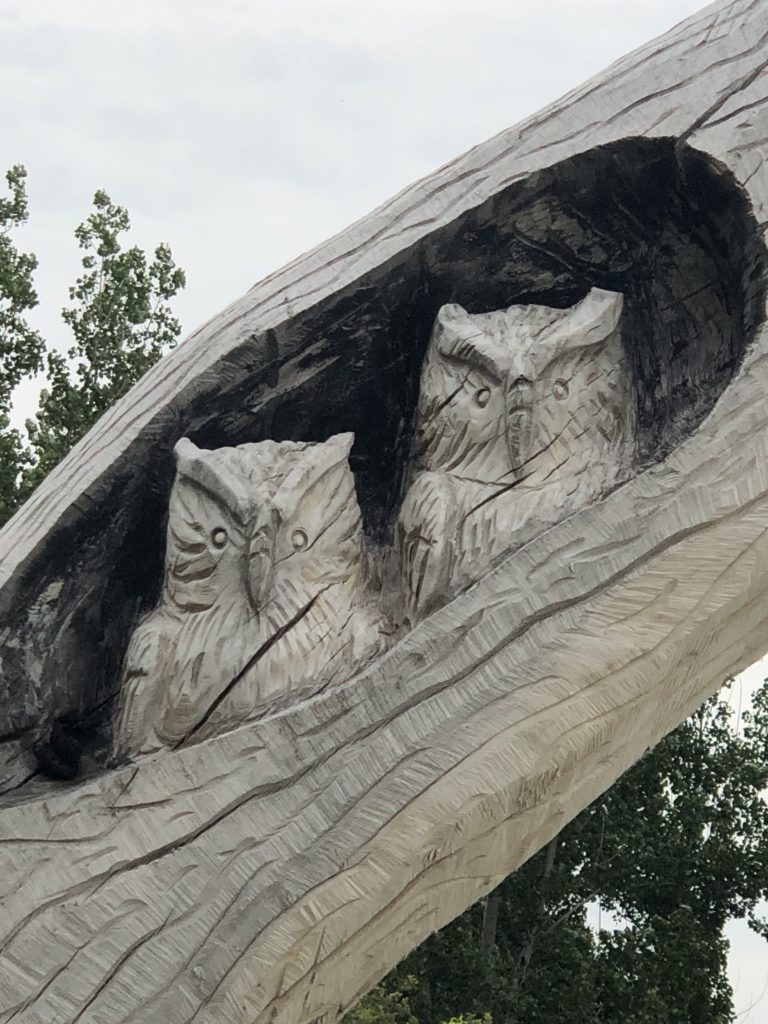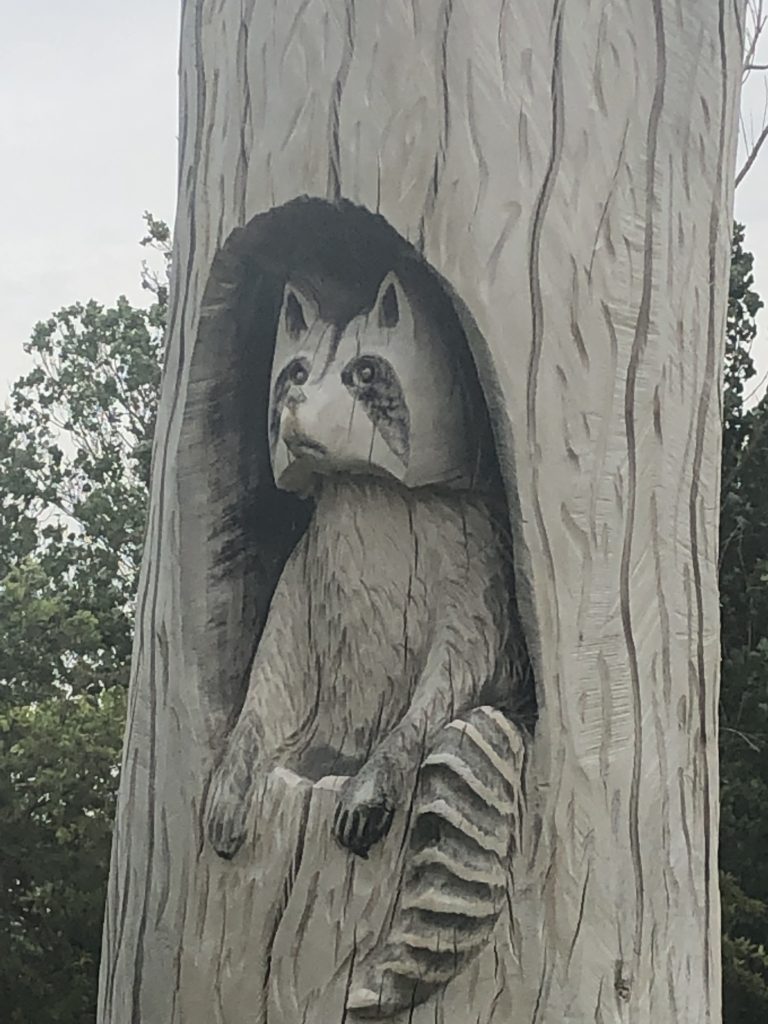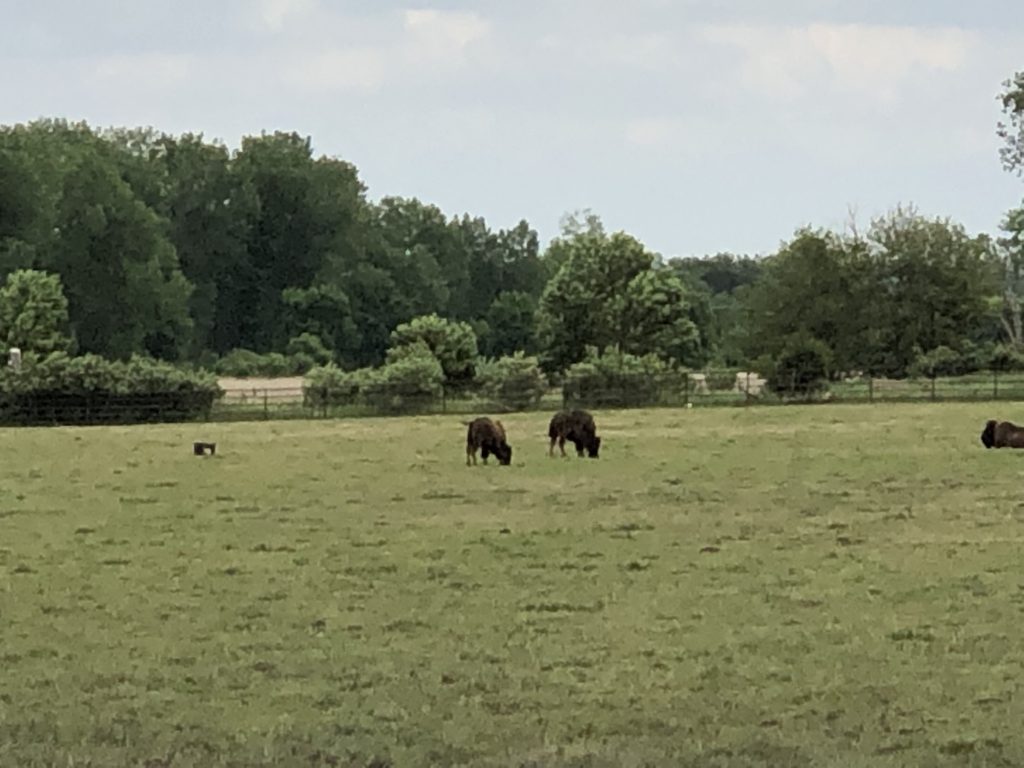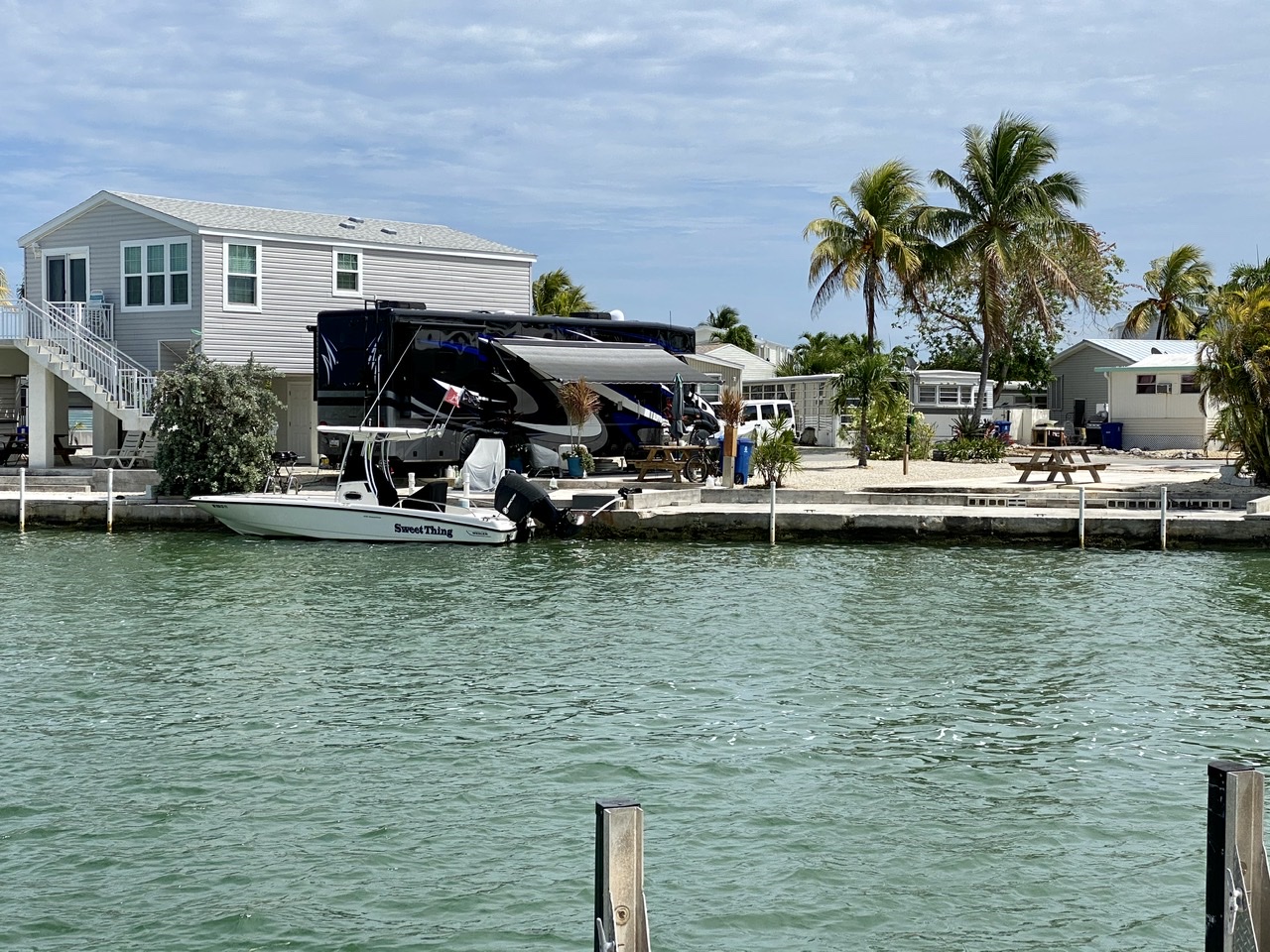Because we were a few days ahead of schedule and there were no reservations available for any of the campgrounds that I called in the interior of South Dakota, we stopped in Sioux City for 2 days. We stayed at the KOA in North Sioux City, SD. We also will stop for 2 days in Mitchell, SD.
We spent time visiting the Sergeant Floyd River Museum & Welcome Center, the Sergeant Floyd Monument and the Lewis & Clark Interpretive Center. As a history buff I loved learning about Sioux City and the Missouri River’s history and the best part is that they were FREE!
The Sergeant Floyd River Museum is housed aboard the dry-docked motor vessel, the M.V. Sergeant Floyd. According to the visitor guide’s pamphlet: the Sergeant Floyd was launched at the Howard Shipyards of Jeffersonville, Indiana on May 31, 1932. She performed light towing, survey and inspection work on the inland waterways under the jurisdiction of the Missouri River Division of the U.S. Army Corps of Engineers.
The vessel was named in memory of Sergeant Charles Floyd, a soldier who accompanied Meriweather Lewis and William Clark on their epic 1804 expedition to the Pacific Northwest. Floyd was the only man of the original expedition to die during their journey. Floyd probably died of a ruptured appendix which could not be treated during that time. He is believed to be the first American soldier to die in the newly purchased Louisiana Territory.
From 1933 until 1975, the Sergeant Floyd was a primary workhorse in Missouri River improvement work, moving men, equipment and supplies and setting navigation buoys along the river. Her role diminished as major navigation improvement projects were completed. In 1983, the Sergeant Floyd was offered for sale as surplus property and Sioux City obtained her where she now serves as a combined state tourist welcome center and river museum.
The Sergeant Floyd Monument is part of a 23-acre park, where a 100-foot obelisk of heavy Kettle River sandstone marks his final resting place. By 1857, the Misssouri River had eroded Floyd’s Bluff and nearly destroyed his grave. Concerned citizens from Sioux City recovered Floyd’s remains and reburied them 200 yards east of the old site, further away from the river. In 1894 the remains were exhumed and reburied in sturdy urns and marked by a large marble slab. The Floyd Memorial Association was formed with plans to erect a permament monument. Congress appropriated $5,000 with a like amount from the State of Iowa. Matching donations from private citizens provided enough money for construction and the cornerstone was laid on August 20, 1900, the anniversary date of Floyd’s death. The remains of Sergeant Floyd were again unearthed and placed in the concrete core of the lower courses of the monument, his fourth burial. The dedication of the monument took place on Memorial Day, 1901. The monument is the first designated National Historic Landmark of the U.S.
The completed monument is an Egyptian obelisk of white sandstone 100 feet high. Its foundation is 22 feet square at the base; 11 feet high and 14 feet square at the top, and made of solid concrete reinforced with 32 lengths of railroad irons. Poured in 1 day, it weighs 278 tons, bringing the total weight of the momument to 717 tons.
The Sioux City Lewis & Clark Interpretive Center and the Betty Strong Encouter Center comprise an almost 20,00 sq. ft. private, non-profit cultural complex. These two centers create a Missouri riverfront home for exhibits, programs and activities. The center focuses on Lewis & Clark’s experiences during their expedition. There are several animatronics that talk about Lewis & Clark’s journey.
We finished off sightseeing for the day by searching for the bison we were told were up the road from us. We did find the farm but unfortunately the bison were too far away to get a very good picture. I am sure we will have lots of opportuities to get better pictures of wild bison as we continue our travels.

